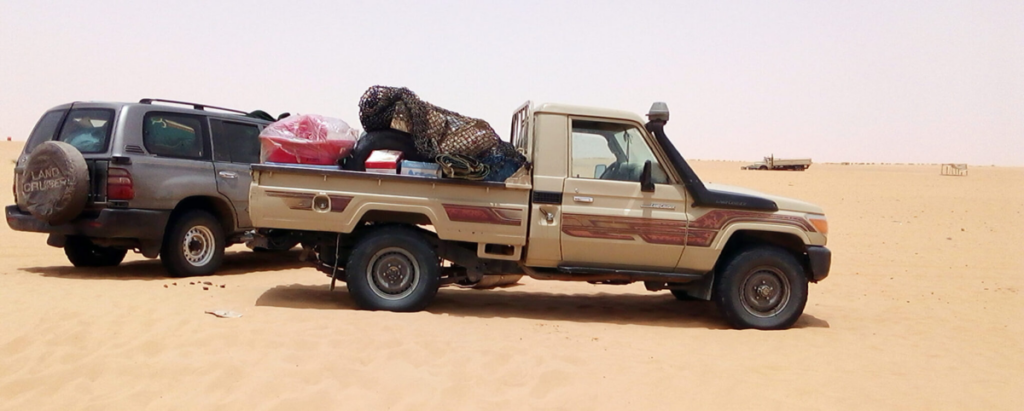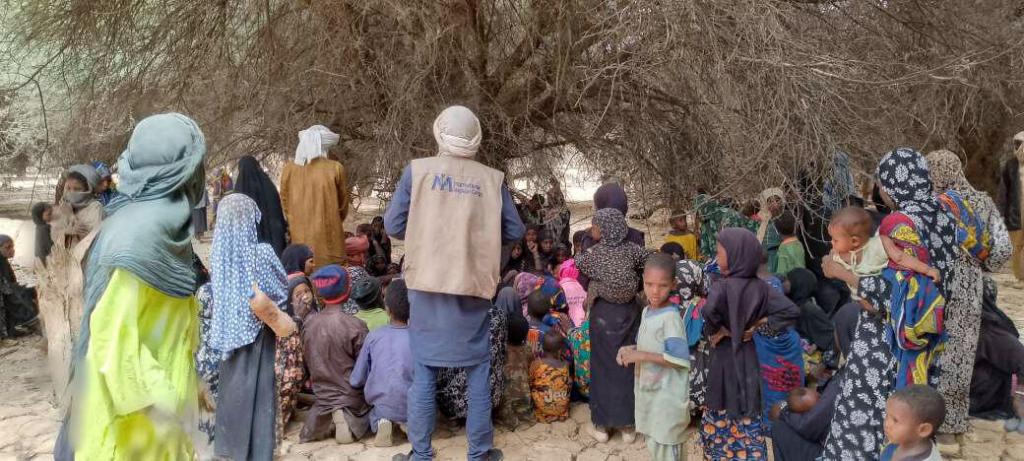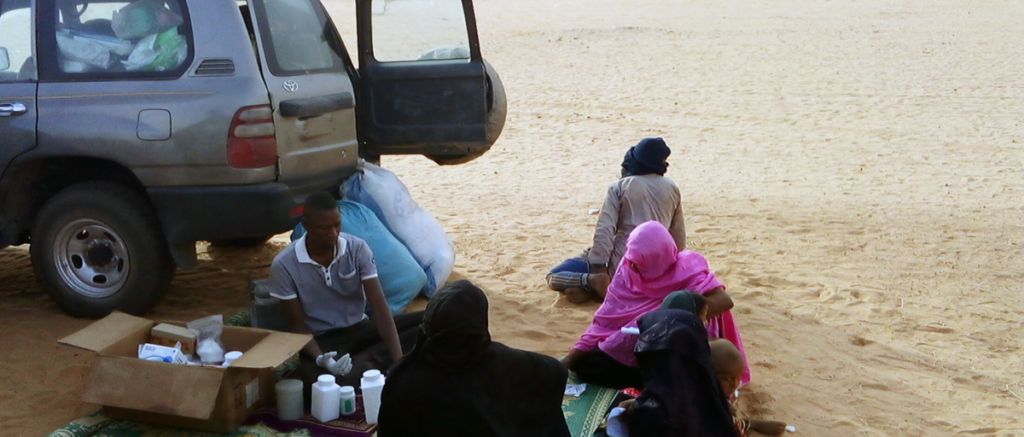To ensure that our mobile medical units can provide care to Mali’s nomadic communities in the Sahara Desert, we employ guides with an intricate understanding of the desert, like Aboubacrine Ag Assaleh.

By Christin Runkle, Senior Specialist, Communications
Photos by International Medical Corps
First published July 18, 2024 by International Medical Corps
One of the hottest and most inhospitable countries on Earth, Mali is nearly two-thirds desert or semi-desert. Populated primarily by nomadic communities, the northern regions of the country lie deep within the Sahara Desert.
In places like these, healthcare is hard to come by. But International Medical Corps is there, operating two mobile medical units (MMUs) that provide curative consultations, pharmaceutical services, childhood vaccines, nutrition screenings, hygiene education, antenatal consultations and birthing assistance. Until June 2023, these mobile clinics voyaged far into Mali’s northernmost Taoudénit region. But as humanitarian needs have evolved, the mobile clinics have been reoriented just south of Taoudénit, to the area around Timbuktu—a city that is famously difficult to reach, due to its remote location. Distances between the city of Timbuktu and our MMU sites can range from 15 kilometers (9 miles) to more than 100 kilometers (62 miles), with each MMU traveling an extraordinary 15,000 kilometers (9,320 miles) in a year. This distance is even more impressive when you consider that there are no roads or signposts in most of the MMUs’ coverage area—just open desert.
To navigate the Sahara and make sure that our MMUs can provide lifesaving medical services to Mali’s nomadic communities, International Medical Corps employs three guides who themselves come from these communities. One of these guides is Aboubacrine Ag Assaleh, an ethnic Tamasheq from Tindjambane, a village 18 kilometers east of Timbuktu. Aboubacrine makes sure that the MMU can easily and safely reach its destination—a task made all the more difficult by the armed groups and bandits who crisscross the desert. Aboubacrine—who is fluent in Tamasheq, Songhai and Arabic, and has functional knowledge of French and Bambara—also provides translation services when needed.

“My knowledge of the languages of the area is an advantage in getting communities to accept the various services offered by International Medical Corps,” says Aboubacrine, who consults with community leaders about the MMU’s objectives and the free services it offers. “These health activities have important value for community members, who can see that International Medical Corps is working to include them in our projects, and who also participate by bringing other community members to the MMU to receive services.”
Aboubacrine, who calls himself a “true son” of the desert, was recruited in 2018 for his knowledge of the area and his deep roots within the nomadic community, where he is well known and respected. Because these communities don’t stay in one place, Aboubacrine remains in close contact to better understand their movements, speaking with people who frequent the weekly marketplaces in the rural areas around Timbuktu and consulting with members of his own family.
“They inform me when the communities have changed their position,” he says. “Their movement is periodic, and they settle depending on the sometimes-difficult conditions for their livestock. Since I am also from the area, and I have relatives who live there, I have several sources of information. These sources enable me to inform International Medical Corps in time to make arrangements regarding the distance to be covered during our outings.”




When it comes time to venture into the Sahara, Aboubacrine uses his intricate understanding of the desert and his years of navigational experience to help the MMU find its way.
“I orient myself in the desert through the grains of sand, the sand dunes, the tracks of animals, the trees, the sun, the wind, the moon, the stars and the tracks of vehicles. I am telling you is what is visible, but we also have our own codes to orient ourselves,” he says. “Some colleagues ask how I manage to take the same route each time, since the paths always lead us toward our beneficiaries. It seems like magic, but it has nothing to do with that—it’s just a question of observation and attention to the signs I mentioned.”
These navigational methods are deeply engrained in the nomadic culture and passed down over generations.
“Being from the area, I inherited these ways from my parents, who are the real experts on how to travel in the desert,” Aboubacrine says. “When I was a teenager, I observed my parents on our different paths and the strategies they used.”
The desert abounds in dangers: wild animals, temperatures that average 45° C (113° F) in the summer, thirst, sandstorms and rain can all cause potential peril, while overcast skies take away the navigational benefits of the sun’s position in the sky and the shadows it casts. To mitigate these factors, Aboubacrine carries plenty of drinking water and avoids taking the MMU through the desert at night, or during rain or sandstorms. But even a stiff breeze can cause a guide to lose direction.
“Because we are in the middle of the desert, there is wind, and this can sometimes make the tracks to find your way completely disappear,” Aboubacrine explains. “So, how do you go about it in this case? You must be able to use all the codes and your experience in the desert to lead the team to a safe place and reach the communities.”



With Aboubacrine’s guidance, the MMU makes two visits a month to the communities it serves, each lasting seven to 10 days. During each of these visits, our teams—making use of any existing structures or trees for shelter and shade—perform an average of 420 curative consultations and 12 antenatal consultations, and provide vaccines to about 140 children. Over the course of a year, each MMU provides some 10,000 people with curative consultations, 1,600 children with vaccines and 300 nomadic women with antenatal interventions.
Working with International Medical Corps has enabled Aboubacrine to further hone his navigational skills while helping those he cares about.
“I am always happy to be with the International Medial Corps team,” he says. “I can be near my family, and I can contribute to the medical care of my community.”

